Impact of Natural Disasters on Sustainability and Well-being: A Research Analysis
VerifiedAdded on 2024/05/23
|6
|1352
|226
AI Summary
This research paper explores the multifaceted impact of natural disasters on sustainability and well-being, focusing on the United States, particularly Western America. It examines the Sendai Framework for Disaster Risk Reduction, highlighting its emphasis on resilience, health, and well-being. The paper analyzes the social, economic, and environmental vulnerabilities that contribute to disaster risk, emphasizing the importance of respecting indigenous rights and knowledge in disaster response. It concludes by advocating for a holistic approach to sustainability that addresses social, emotional, and physical needs, emphasizing the need for new metrics to measure and monitor progress in well-being.
Contribute Materials
Your contribution can guide someone’s learning journey. Share your
documents today.
1 out of 6
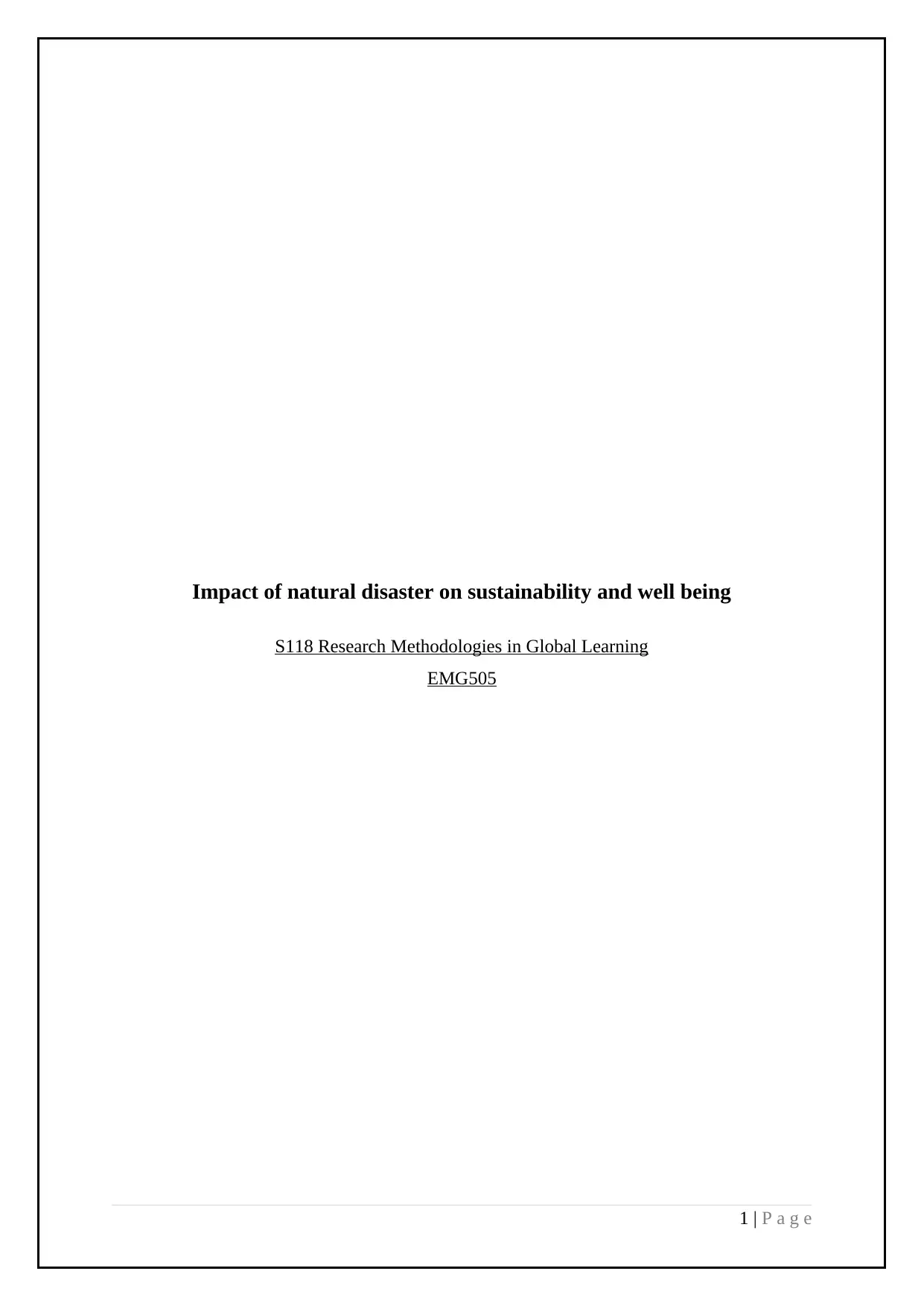
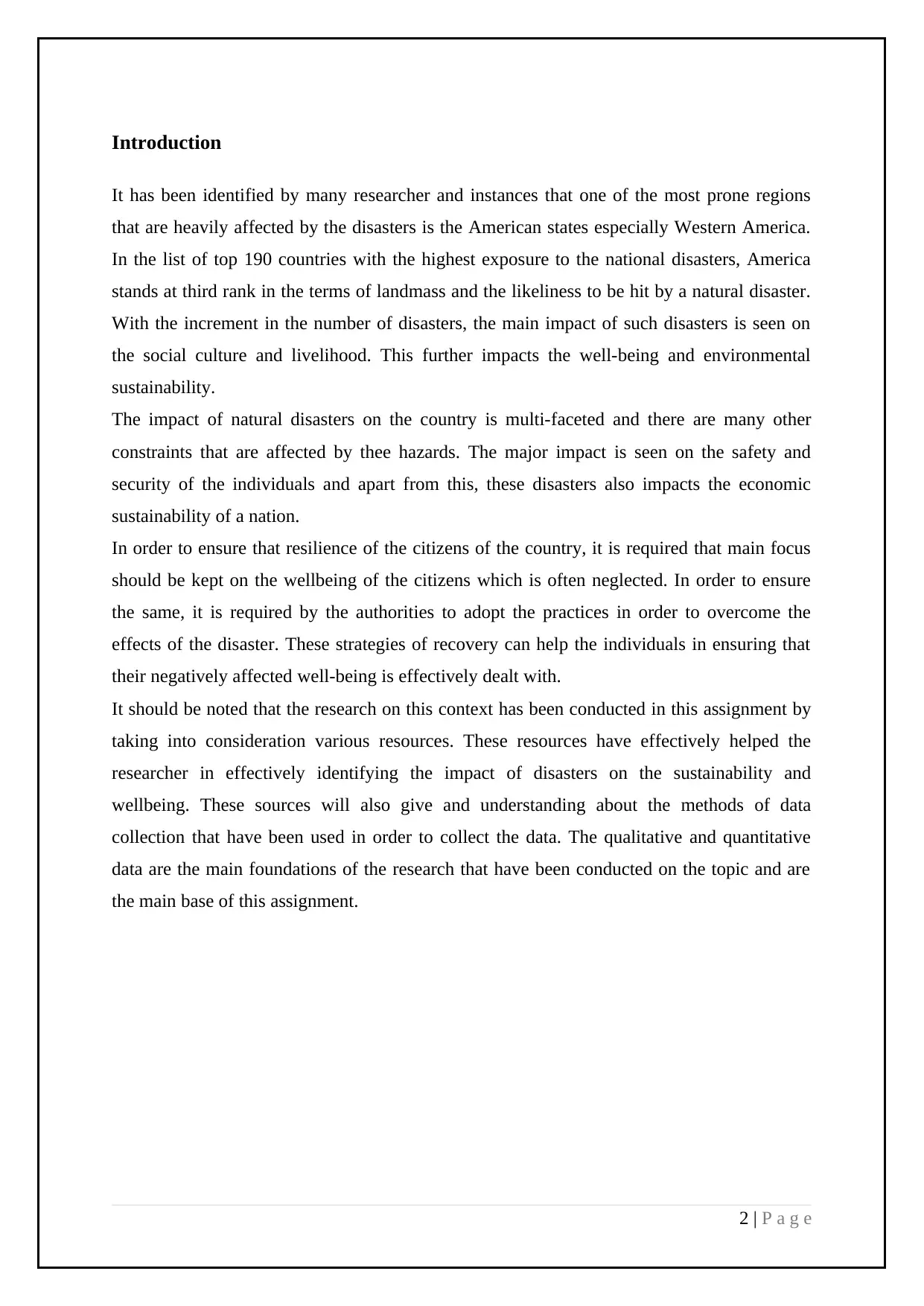
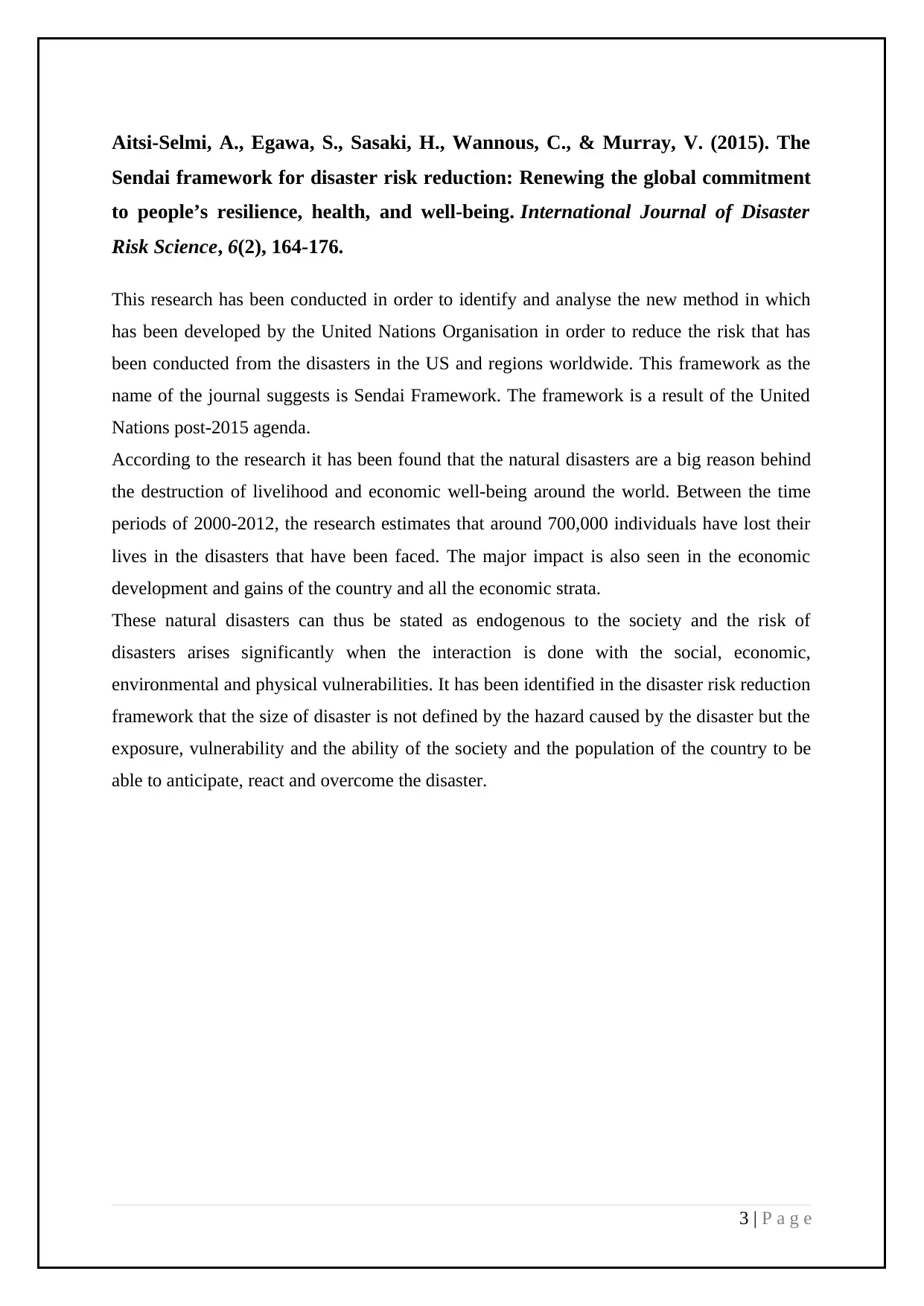
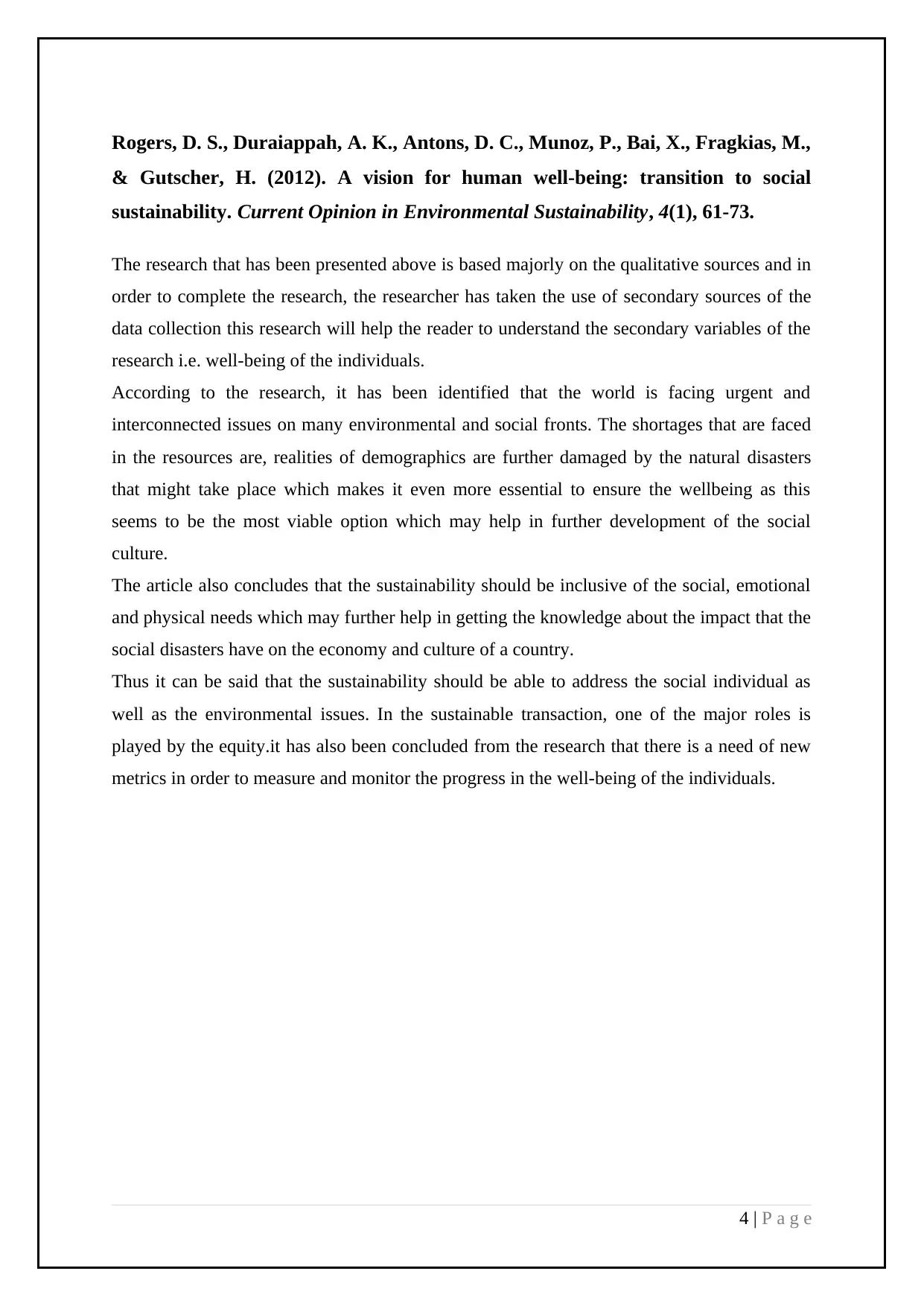
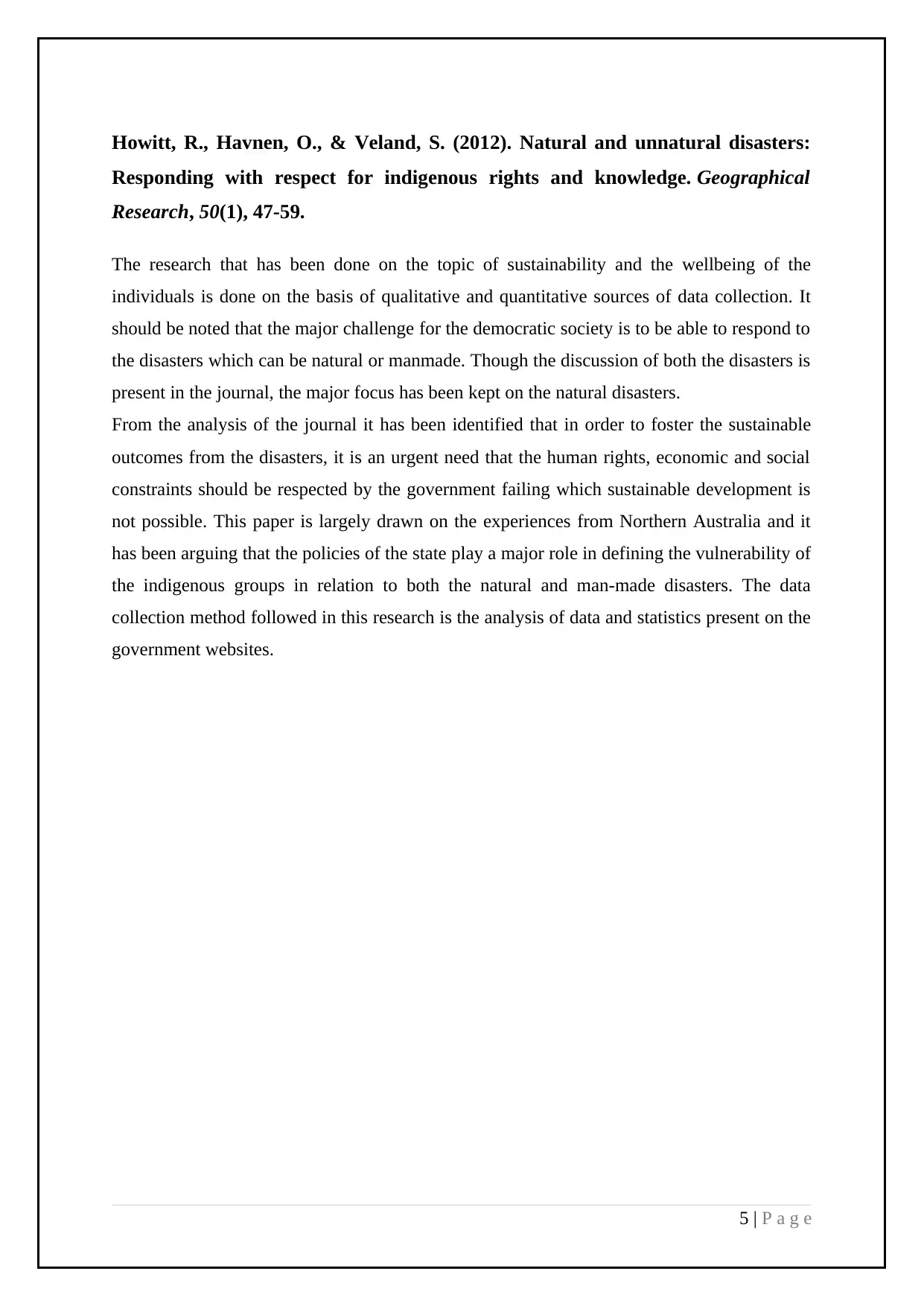
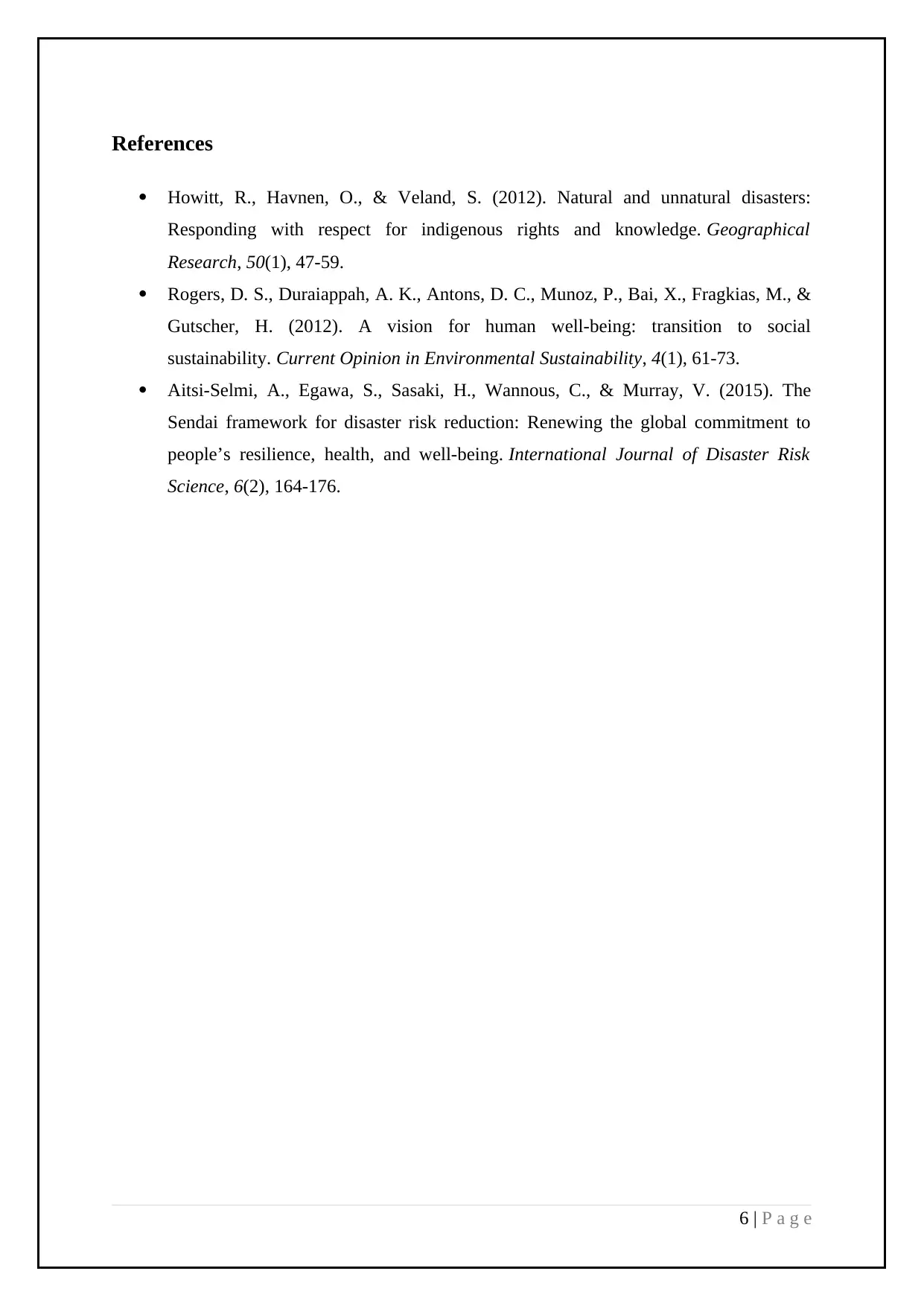






![[object Object]](/_next/static/media/star-bottom.7253800d.svg)